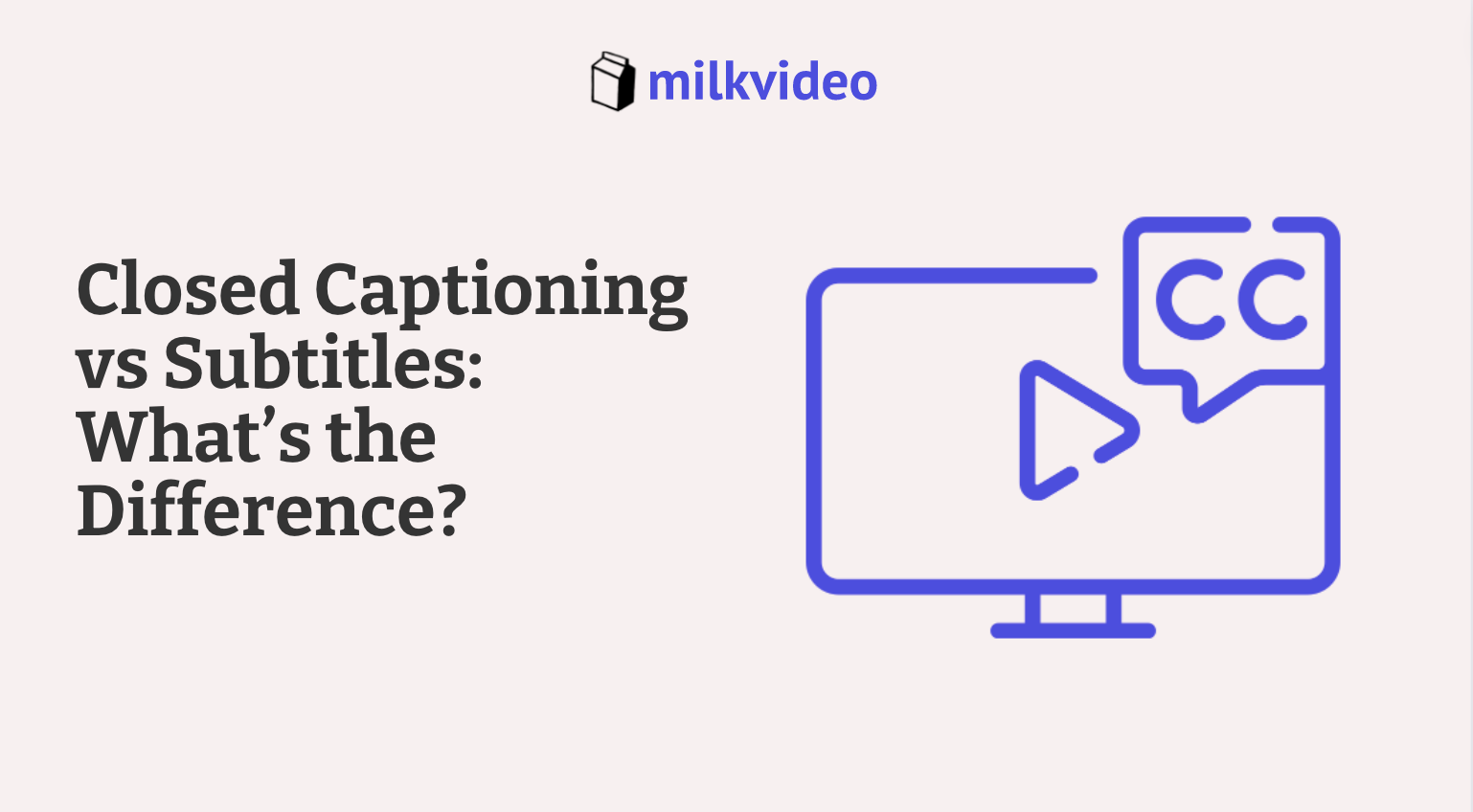Closed Captioning vs Subtitles: What’s the Difference?

If you’ve watched videos online, you’ve likely come across subtitles and close captioning. Did you know that these two terms do not mean the same thing? While many people use them interchangeably, subtitles and captions describe two different things. This guide will explore the meaning of each term and explain how they are different.
What is Closed Captioning?
The term caption refers to the text on a video that describes the dialogue and other relevant sounds played. The word caption is rather broad, and we can break that down into two options: closed captions and open captions.
Closed captions are produced by the application or platform that displays the video. As a result, the viewer can easily press a button to turn them off. If you watch Netflix, you will notice that you can toggle closed captions on and off as needed to suit your viewing needs.
Open captions, on the other hand, are embedded in the actual video file. This means that the user can’t turn them off because they are linked to the other images and audio playing on your screen.
So, what is closed captioning used for?
The most common use of captions is to make video content accessible to those who are hard of hearing. The text will describe everything happening in the video, including non-speech elements like background noises and sound effects. They will also identify speakers so that viewers can note what is happening in the video with ease.
U.S. laws require captions for most video content, so you will see these displayed on all major platforms and video-sharing sites. Their purpose is to aid viewers, so you can also change the positioning on the screen to avoid obstructing essential visual elements in the video.
How Are Subtitles Different?
You may be thinking that captions seem like they are the same thing as subtitles. They both represent text that moves across your screen as the video plays, and most of the time they describe what the characters on your screen are saying. So, what makes them different?
The key here is that subtitles help those viewers who don’t speak the language shown in the video. In other words, subtitles work to translate spoken dialogue into another language – their primary purpose is not to help those who are hard of hearing understand the video.
If you speak the language that the video is in then the terms might seem very similar, but the differences become clear when you read the text in another language.
Although the words synchronize to the audio that is playing, the subtitles do not include non-speech elements. The assumption here is that the viewer can read the subtitles in their native language but still listen to background noises and sound effects with their natural hearing.
Users can generally toggle subtitles on and off, and many large platforms allow you to choose subtitles in a broad range of languages.

